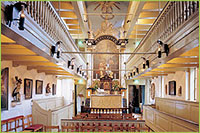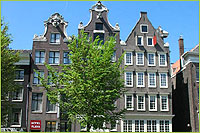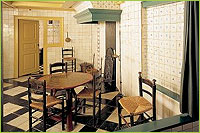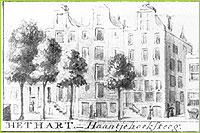| |
 |
|
Museum Amstelkring
Museum Amstelkring is one of the most cherished museums in Amsterdam. The special atmosphere in this canal house with its 17th century period rooms and church in the attic, surprises any visitor.
Although Amsterdam has been known as a tolerant city for many centuries, after the
1578 Protestant Alteratie (Changeover), Roman Catholics fell into disfavor. Forced to
worship in secret, they devised ingenious ways of gathering for Sunday services. This
museum in the middle of the Red Light District incorporates the most amazing and
best preserved of these clandestine places of worship: Ons' Lieve Heer op Solder
(Our Lord in the Attic). The Catholic church is in the attic of one of the oldest canal
houses you can visit, which was transformed in 1661-63 by wealthy Catholic merchant
Jan Hartman specifically to house a church. To tour a rambling old canal house furnished much as it would have been in the mid-18th century makes a visit here worthwhile by
itself (but note that the steep stairways can be tough to negotiate).
Worshipers entered by a door on a side street and climbed a narrow flight of stairs
to the hidden third-floor church. Nothing prepares you for the sight you come on
when you climb the last flight of stairs into the attic. A large baroque altar, religious
statuary, pews to seat 150, an 18th-century organ, and an upper gallery complete this miniature church.
Following Hartman's death in 1668, the house was bought by Jan Reynst, a Protestant merchant. Reynst planned to rent the attic as storage space, but realized he could make
more money charging Catholic worshipers for continued use of their "secret" church. An
18th-century redecoration created the chapel-size church you see now, with a baroque
altar, spinet-sized pipe organ, and two narrow upper balconies. It's still in use for services
and concerts. Other rooms contain a trove of magnificent religious vessels, many of them
in gold and silver, including monstrances made in the 17th century and another, in
Art Deco style, from 1924.
|





